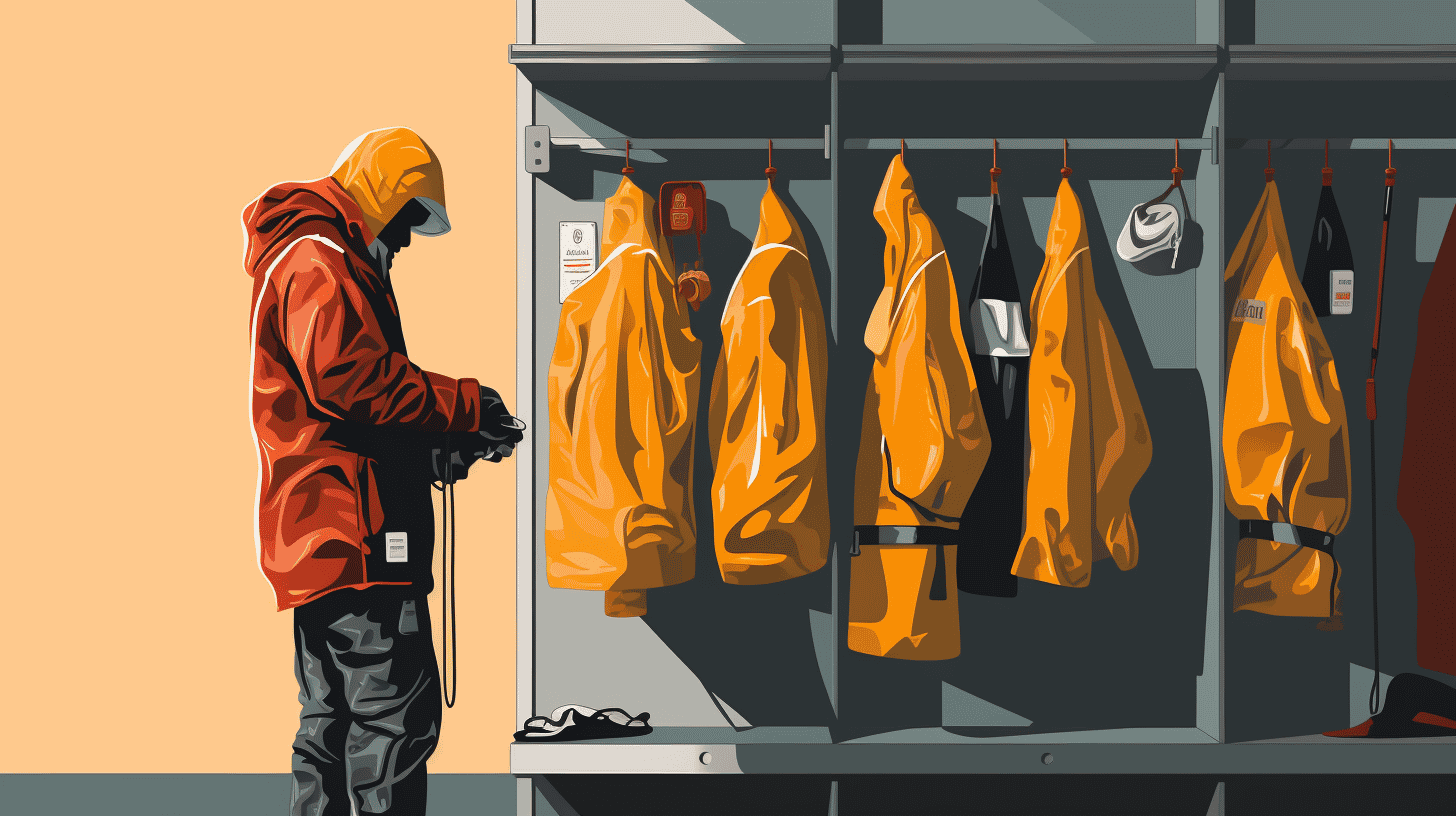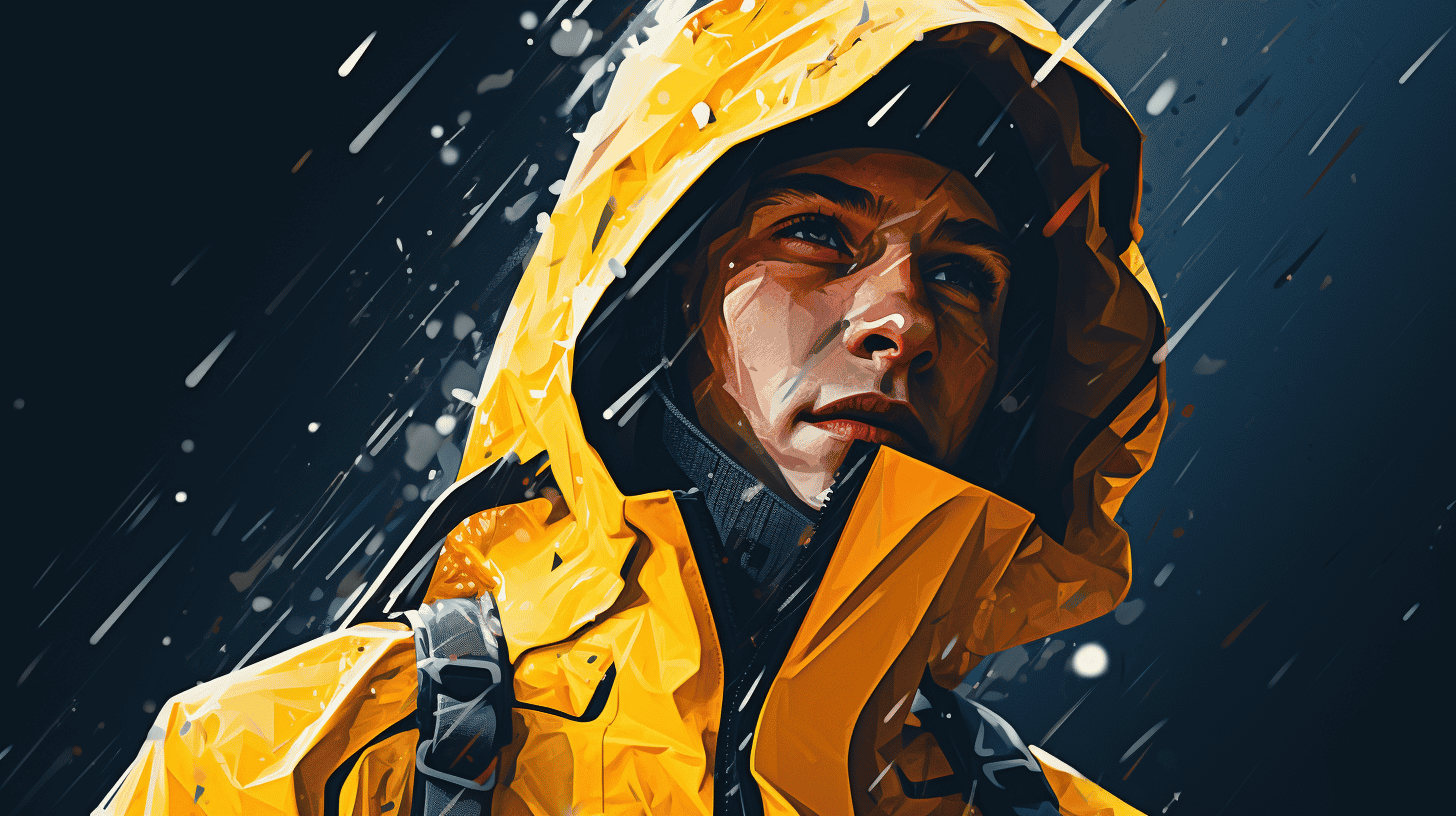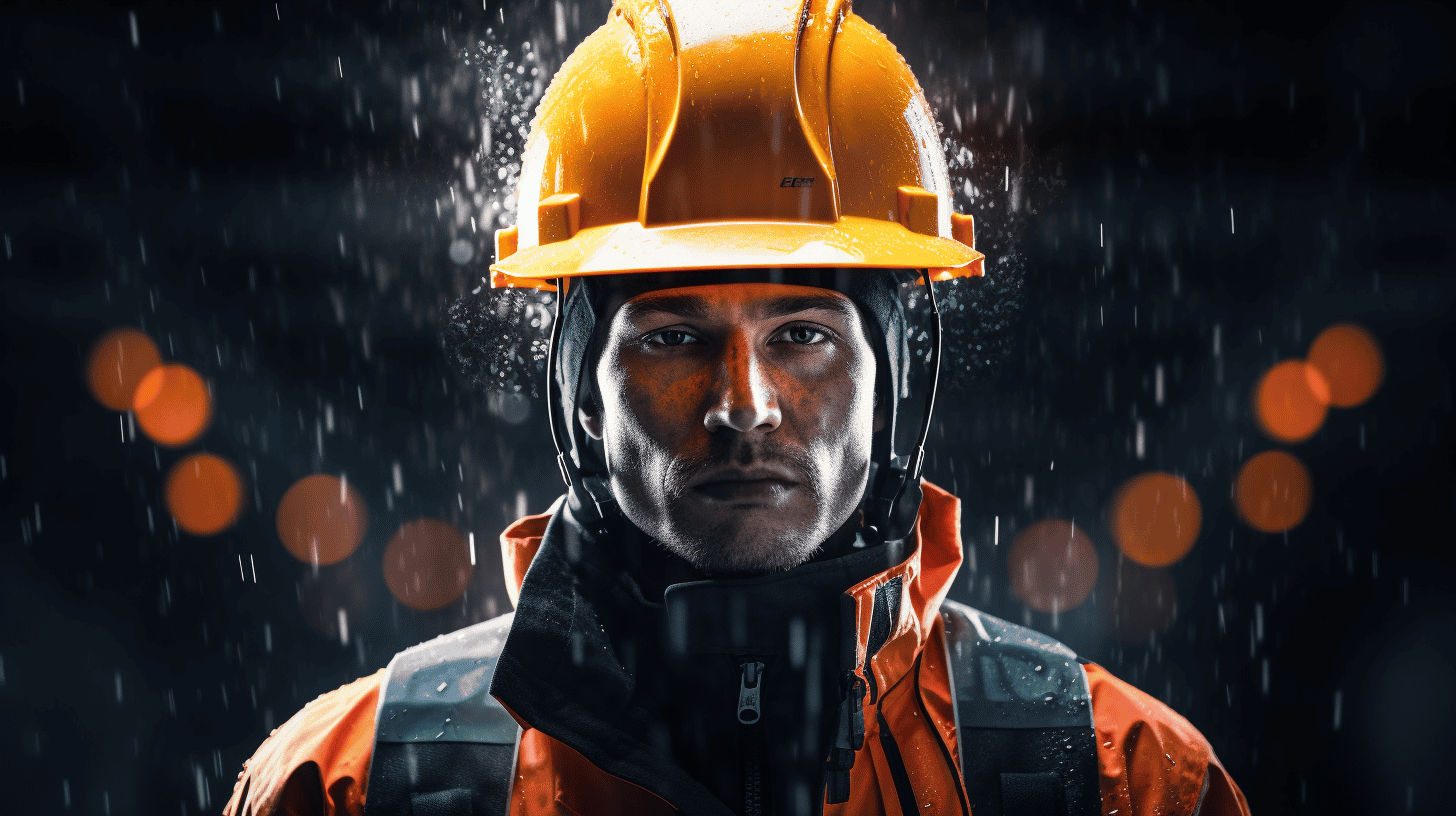Stepping onto a construction site on a rain-soaked day doesn't stop at braving the raindrops. Enveloping the task at hand is a suit of armor: the indispensable construction rain gear. Rightfully so, this gear has evolved into an essential component of construction work, transforming rainy day tasks from nightmarish to manageable. This article introduces key insights into the significance of construction rain gear, tips for its care, and the attributes of high-quality, durable gear that can withstand even the most torrential downpour. Buckle up and allow this information to elevate your understanding, appreciation, and practice in maintaining rain gear, along with emphasizing the importance of safety standards off and on the field.
Importance and Market Value of Construction Rain Gear
In the realm of construction, battling the elements is part and parcel of the job. From sweltering heat waves to bone-chilling snowstorms, construction workers courageously withstand a broad spectrum of challenging weather conditions. Amidst all these, standing strong and unyielding, like the structures they erect, is their trusted companion - Construction Rain Gear. This segment not only contributes significantly to the safety and productivity of the workers but also dominates a substantial slice of the market. Delving into some insightful figures, the rainwear market for construction workers has been valued at an impressive $3864.7 million in 2022. This striking number underlines the substantial industry significance of this crucial equipment.
The exalted status of construction rain gear doesn't emerge in a vacuum; it is underpinned by the indispensable role it performs. This gear shields workers from the dampness and discomfort brought by the downpours, enabling them to continue their operations unhindered. The moisture-wicking, waterproof, and breathable features of rain gear assure that workers are not hindered by clammy or waterlogged clothing. This, in turn, boosts morale and productivity at construction sites.
Let's delve into some key aspects contributing to the sweeping prominence, and hence the market value, of construction rain gear:
- Safety: Construction rain gear is specifically tailored to safeguard workers from the hazards posed by the rain. Slip-resistant boots, waterproof gloves, and high-visibility jackets significantly diminish the risk of injuries due to slipping or reduced visibility in rain.
- Comfort and Productivity: The advanced technology entails rain gear that is not only waterproof but also breathable, ensuring dryness and comfort. This aids in maintaining worker productivity even under adverse weather conditions.
- Durability: Given the harsh conditions they're exposed to, durability is an essential trait for construction rain gear. High-quality equipment resists wear and tear, making it a worthwhile long-term investment for construction companies.
With the rise in extreme weather occurrences due to climate change, the demand for resilient construction rain gear is only set to increase, endorsing its continual market value growth.
While the importance of rain gear in the construction industry is unequivocal, the choice of the right gear makes a significant difference. For exploring the finest options, a great place to start would be the Industry Leaders in Rain Gear. Their persistence in maintaining impeccable standards has massively contributed to the equipment's escalated market value over the years. The symbiosis between construction workers and high-quality rain gear will continue to be a mainstay in the industry, responding to nature's curveballs with resilience and preparedness.
Materials Recommended for Durable Construction Rain Gear
From massive skyscrapers to cozy houses, construction is an essential part of our daily lives. But, what happens when hardworking construction workers have to face the fury of unstoppable rains? They need high-quality, durable rain gear they can trust. Below, we delve into the materials that make the best rain gear for construction - gear that can withstand the battering of the elements, that won't give up before the task at hand is complete.
Gore-Tex
Gore-Tex is a game-changing element when it comes to construction rain gear. It's incredibly water-resistant, yet allows moisture created by the wearer to escape. Therefore, preventing the dreaded sweaty clammy feeling.
- Remarkable breathability
- Stellar waterproof capabilities
- Noteworthy durability
PVC-coated Polyester
PVC-coated polyester, a common choice for construction rain gear, marries the strength of polyester with the water-shielding prowess of PVC, creating a resilient shield against the harshest of rains.
- Optimal rain protection
- High wear-and-tear resistance
- Affordable yet strong
Neoprene
Neoprene, known for its durability and chemical resistance, is an additional material of choice for rain gear. It's robust, enduring, and fairly resistant to oils, heat, and other harsh elements common on construction sites.
- Chemical-resistant
- Flexible even in low temperatures
- Long-lasting, owing to its high tensile strength
Face Fabric
Face fabric, typically used in 3-layer structure of rain gear, usually consists of a nylon or polyester exterior. It forms the outermost layer, acting as the frontline defense against water and, equally important, abrasion.
- Stop-rain coating
- Durable in all conditions
- Variety of choices in material and weight
As you can see, there are a variety of materials used in creating rain gear for construction. These materials are chosen exclusively for their strength, durability, and ability to keep the wearer dry, ensuring productivity doesn't taper off when the clouds roll in. Carhartt, for instance, is known for its durable rubber rain gear, which is testament to the effectiveness of these materials.
Remember, when selecting materials for durability, it's important to consider factors like breathability, flexibility, and resistance, to ensure the gear can hold up in a variety of demanding environments. Knowledge is, after all, power, and the right knowledge can keep you dry and productive, even amidst a downpour. Rain or shine, work on the construction site never stops, and it shouldn't have to. With the right rain gear, it won't have to.
Maintenance and Care for Prolonging Lifespan of Rain Gear
Rain gear is a critical investment, especially for those working in the construction industry. However, merely owning high-grade rain gear doesn't guarantee its toughness and prolonged function. To maintain its optimum performance, a routine of care and upkeep is imperative. So, if you find yourself frequently using rain gear, you must know how you can add to its longevity. Your effort doesn't end at buying quality rain gear; adequate maintenance is equally essential.
Routine Cleaning and Proper Storage
Cleaning and storing rain gear properly can go a long way in preserving its durability. When washing your gear, it's recommended to use cold water and mild detergent. Harsh chemicals found in powerful detergents can degrade the materials in your gear, thereby shortening its lifespan.
After cleaning, ensure the gear is completely dry before storing it. Moisture left on the gear can lead to mildew or unpleasant odors. Once dry, store your gear in a cool, shadowy space. Use of desiccant packs to absorb any residual moisture is highly encouraged.
Regular Inspections
Regularly inspecting your rain gear can help you identify and address issues before they exacerbate into costly damages. Check for holes, ripped seams, and peeling in the material. Repair any damage quickly to prevent it from weakening the overall quality and function of your gear.
Re-waterproofing
Even though rain gear is designed to be water-resistant, heavy usage can reduce its water repellency. Consider applying a re-waterproofing product, like Nikwax, to restore its water-repelling abilities. These products are designed to re-activate the water resistance of your gear and can be easily applied.
Maintenance of rain gear might seem like an unnecessary effort, but the rewards are worth it. The care that you put into maintaining your gear plays a huge role in prolonging its functionality. Remember, the best way to ensure durability is not just investing in quality gear, but also taking appropriate care of it. For more maintenance tips, check out our blog post on Quality Rain Gear Durability Tips to make the most of your investment in rain gear.
Key Features to Look for in Durable Rain Gear
If you're preparing to brave the elements, it's crucial to arm yourself with the most serviceable rain gear. These are not mere umbrellas or light ponchos; instead, we're talking about hardcore gear designed for those working in construction, fishing, or other outdoor activities that require perseverance in inclement weather. Investing in high-caliber rain gear can be a game-changer, providing comfort and safety when it matters most. Below, we explore four key features to look for when selecting durable rain gear.
Waterproof Seams and Laminated Fabrics
One surefire way to guarantee your rain gear keeps you dry is by ensuring the seams are waterproof, and the fabrics are laminated. Waterproof seams prevent water from penetrating through stitch lines, a common weak point in many garments. On the other hand, laminated fabrics have their surfaces entirely covered with a waterproof, non-porous coating. Combining these two features offers an impenetrable fortress against persistent rainfall.
Breathable Membranes
We all know that rain gear needs to keep water out. But, it's equally important for comfort that moisture from the inside (think sweat and condensation) can escape. Enter breathable membranes. These clever innovations allow air to pass through but block water droplets, keeping you dry both inside and out. So, no matter how hard you're working, breathable membranes ensure your rain gear won't turn into a portable sauna.
ANSI 107 Standards
There's a reason workers in potentially hazardous conditions often wear bright colors - visibility plays a crucial role in worker safety. Rain gear isn't just about staying dry, it's also about staying safe. That's why you'll want your gear to meet or exceed the ANSI 107 standards. Garments like the Sentinel™ linemen FR rain gear, which meets these standards, significantly enhance visibility and safety, even in adverse weather conditions.
High-Quality Materials
Lastly, let's talk materials. The material your gear is made from determines not only its effectiveness against rain but also its durability over time. Materials like 45 denier nylon ripstop offer unparalleled resistance to tearing and fraying, making it an ideal choice for anyone needing Rain Gear Durability and Longevity.
Understanding these features will empower you to make a well-informed choice when purchasing your next set of rain gear. Not just something that keeps you dry, but gear that protects, lasts, and works hard right alongside you in the harshest conditions.
Washing and Drying Practices for Maintaining Rain Gear
Spending your precious time outdoors, exploring unknown terrains or going for breathtaking hikes should not be marred by the worry of rain. But are you aware that the right washing and drying practices can significantly enhance the life of your rain gear, saving you from constant replacements and the tension of an unexpected downpour? Let's delve into the best practices for maintaining your rain gear.
Rain gear stands guard, shielding you from the less favorable turns of weather. But what protects your protectors? Unknowingly, the detergents we use or the ways we launder them can harm their water-repelling properties. Even high-quality gear needs correct maintenance to perform its best; fabric softeners are absolute no-no’s and adhering to the manufacturer's instructions holds the key to gear longevity.
Keeping it clean involves three significant steps – washing, rinsing, and drying.
- Washing
- Rinsing
- Drying
Start by emptying pockets and closing zippers. You want unsoiled gear; not coins or crumpled paper washing up. Use a mild detergent; avoiding fabric softeners that can interfere with the gear's water-resistant abilities. Some manufacturers recommend specific cleaning products for their rain gear. Be sure to follow their advice.
Rinsing isn’t about doing it fast but doing it right. Ensure there are no traces of detergent left as residues can block waterproofing features. If your gear isn’t super dirty, a simple rinse might be enough to keep it functional and good-to-go.
High heat can spoil the water-repelling coatings of your gear. Air drying or tumble drying at low temperatures is ideal. Post drying, a gentle application of heat such as ironing at a low temperature setting or using a hairdryer can reactivate water resistance.
To sum it up, the secret to long-lasting rain gear lies in proper washing and drying routines. Avoid fabric softeners and diligently follow the manufacturer's instructions. Your rain gear will not only possess extended life but also enhanced performance when you need it the most. And remember, your gear takes care of you out in the wild; it only seems fair that you return the favor.
Safety Considerations for Selecting Construction Rain Gear
In the challenging realm of construction, safety ought to be considered a top priority. One critical aspect, often overlooked, is the proper selection of construction rain gear. By choosing the right attire, workers can focus more on their tasks while remaining secure and comfortable, even in the grimmest weather conditions. This piece details the must-know safety considerations while choosing rain gear for construction personnel, focusing on two key criteria—Reflective elements following the ANSI/ISEA 107 standards and gear appropriate for varying weather conditions.Reflective Elements and ANSI/ISEA 107 Standards
Visibility remains a major concern, particularly during downpours or in low light situations. Selecting high-visibility rain gear compliant with ANSI/ISEA 107 standards helps to alleviate this risk. Let's delve into some reasons why.- Safety Enhancement: These hi-vis garments are crafted with reflective strips, improving recognition and visibility. This feature can significantly reduce the risk of accidents, associated with poor visibility.
- Compliance to Standards: Items adhering to the ANSI/ISEA 107 standard ensure an optimum level of safety. They're tested to meet or exceed certain reflectivity and visibility criteria, so safety is fundamentally built into their design.
Appropriate Gear for Weather Conditions
What's equally essential is to consider the weather conditions that the gear will be exposed to.- Cooler Temperatures: For chillier regions or seasons, it is advisable to choose insulated and lined rain gear. This ensures the workers stay warm, without compromising on mobility or comfort.
- Warmer Conditions: On the other hand, when working under hot rainy conditions, unlined rain gear is the best choice as it allows air circulation, preventing overheating and excessive sweat.
Conclusion
Caring for your rain gear goes beyond just cleaning it routinely. It's about understanding the fabric, adhering to manufacturers' specific care instructions, and routine inspections for any signs of wear and tear. The safety and comfort that the high-quality rain gear offers can be sustained with regular maintenance and re-waterproofing when necessary.
Also, when buying new construction rain gear, don't simply go for the least expensive option. Look for those key features we've discussed: waterproof seams and laminated fabrics, breathable membranes, adherence to ANSI 107 standards, and high-quality materials.
By choosing a quality brand like Hurricane Raingear, you're investing in superior protection, durability, and comfort. Their range of 100% waterproof, rip-resistant rain gear is trusted by thousands in the field, offering unrestricted movement and enhanced visibility features. What's more, with their full customer support and tracked shipments, your satisfaction is their priority.
Your rain gear is essential protective equipment. Treat it with care, and it won't let you down, even in the harshest weather conditions.
Frequently Asked Questions
-
What are the essential steps to maintain construction rain gear?
To maintain construction rain gear, follow these steps: 1. Clean regularly, 2. Use appropriate detergent, 3. Avoid hot water and high heat drying, 4. Store properly, and 5. Repair small damages promptly.
-
How often should I clean my construction rain gear?
It is recommended to clean your construction rain gear after every use or whenever it gets dirty. Regular cleaning helps remove dirt, chemicals, and debris that can cause damage over time and maintain the gear's waterproof quality.
-
Can I machine wash my construction rain gear?
Most construction rain gear can be machine washed, but it's crucial to check the manufacturer's instructions. Use a gentle cycle, mild detergent, and avoid hot water and high-speed spinning. Hang or lay flat to dry instead of using high heat drying methods.
-
How should I store my construction rain gear?
Store your construction rain gear in a cool, dry place away from direct sunlight. Avoid storing it in damp environments or tightly folded, as it can lead to mildew or damage the fabric. Hang or loosely fold the gear to maintain its shape.
-
What should I do if my construction rain gear gets damaged?
If your construction rain gear gets damaged, it's important to repair it promptly. Small damages like tears or loose seams can be fixed with the help of a waterproof patch or by sewing. If the damage is extensive, consider getting it professionally repaired or replaced.























Leave a comment
This site is protected by hCaptcha and the hCaptcha Privacy Policy and Terms of Service apply.